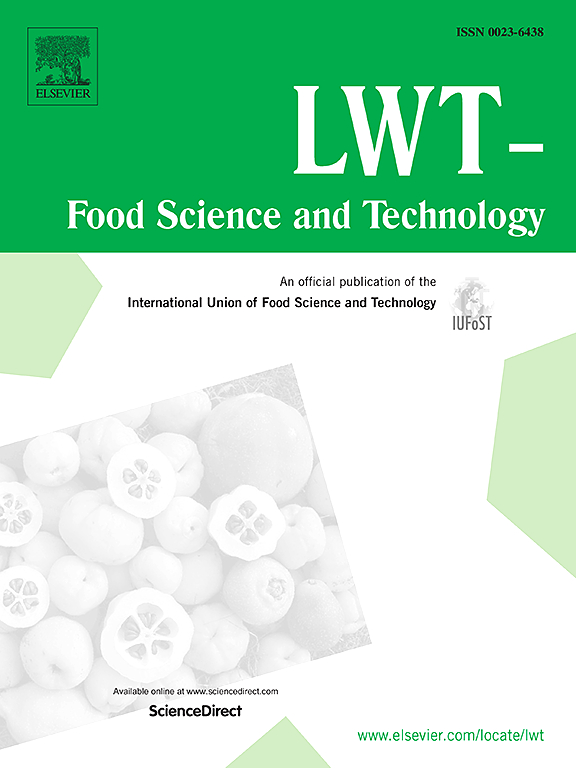从双孔酵母菌中提取的工程脂肪酶具有更好的热稳定性,可用于制备中长结构脂质
IF 6
1区 农林科学
Q1 FOOD SCIENCE & TECHNOLOGY
引用次数: 0
摘要
来自热酵母菌(Thermomyces dupontii)的脂肪酶(TDL)在制备中长结构脂质(LML-SLs)方面显示出巨大潜力,但其较差的热稳定性是进一步工业应用的重大障碍。在此,我们基于结构和序列分析(包括二硫键计算和序列比对)进行了合理设计,生成了一种耐热性更强的突变体。与野生型 TDL 相比,突变体 M3 在 60 °C 时的半衰期(t1/2)、15 分钟时的半衰温度(T 50)和最适温度分别增加了 9.1 倍、7.2 °C 和 10 °C。值得注意的是,突变体 M3 的比活性比野生型 TDL 高 49.1%。分子动力学(MD)模拟显示,突变体 M3 的结构灵活性降低,这可能是其耐热性增强的原因。此外,还利用野生型 TDL 和突变体 M3 从亚油酸乙酯和三尖杉酯合成了 LML-SL。与野生型 TDL 组相比,突变体 M3 组的 LML-SL 含量增加了 8.1%。这项研究将为 TDL 的工业应用铺平道路,并为提高其他脂肪酶的热稳定性提供有价值的见解。本文章由计算机程序翻译,如有差异,请以英文原文为准。
Engineered lipase from Thermomyces dupontii with improved thermostability for preparation of long-medium-long structured lipids
Lipase from Thermomyces dupontii (TDL) shows great potential to prepare long-medium-long structured lipids (LML-SLs), but its poor thermostability represents a significant obstacle to further industrial application. Herein, a rational design based on structure and sequence analysis (including disulfide bond calculation and sequence alignment) was used to generate a more thermostable mutant. Compared with wild-type TDL, mutant M3 displayed a 9.1-fold, 7.2 °C and 10 °C increase in half-life (t1/2) at 60 °C, the half-loss temperature (T 50) at 15 min and optimum temperature, respectively. Remarkably, the specific activity of mutant M3 was 49.1% higher than that of wild-type TDL. Molecular dynamics (MD) simulations showed that the structural flexibility of mutant M3 was reduced, which might contribute to the enhanced thermostability. Additionally, LML-SLs were synthesized from ethyl linoleate and tricaprylin with wild-type TDL and mutant M3. Compared with the wild-type TDL group, the LML-SL content of the mutant M3 group increased by 8.1%. This study will pave the way for the industrial application of TDL and provide valuable insights for enhancing the thermostability of other lipases.
求助全文
通过发布文献求助,成功后即可免费获取论文全文。
去求助
来源期刊

LWT - Food Science and Technology
工程技术-食品科技
CiteScore
11.80
自引率
6.70%
发文量
1724
审稿时长
65 days
期刊介绍:
LWT - Food Science and Technology is an international journal that publishes innovative papers in the fields of food chemistry, biochemistry, microbiology, technology and nutrition. The work described should be innovative either in the approach or in the methods used. The significance of the results either for the science community or for the food industry must also be specified. Contributions written in English are welcomed in the form of review articles, short reviews, research papers, and research notes. Papers featuring animal trials and cell cultures are outside the scope of the journal and will not be considered for publication.
 求助内容:
求助内容: 应助结果提醒方式:
应助结果提醒方式:


